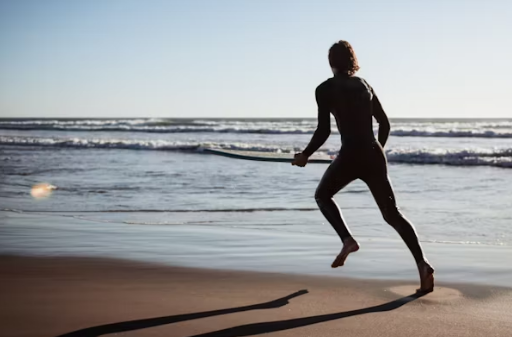Introduction to Advanced Yoga and Mobility
Are you ready to take your yoga practice to the next level? Advanced yoga and mobility techniques offer a gateway to exploring the incredible potential of your body and mind. In this comprehensive guide, we’ll delve into the world of advanced asanas, discussing their benefits, preparation techniques, and specific poses to challenge and inspire you. We’ll also explore how to incorporate mobility work to enhance your overall practice and physical well-being.
Benefits of Advanced Yoga Practices
Advanced yoga practices bring a wealth of benefits to both body and mind. As you progress in your yoga journey, you’ll notice improvements in strength, flexibility, and balance. But the advantages don’t stop there. Advanced asanas can help:
- Boost confidence and self-esteem
- Enhance mental focus and concentration
- Improve body awareness and proprioception
- Increase overall physical endurance
- Deepen your mind-body connection
These benefits contribute to a more holistic approach to health and wellness, empowering you to push your limits and discover new possibilities in your practice.
Preparing for Advanced Asanas
Before diving into complex poses, it’s crucial to build a solid foundation and prepare your body appropriately. Let’s explore some key aspects of preparation for advanced yoga practices.
Building a Strong Foundation
To excel in advanced asanas, you need to develop a strong base. This means dedicating time to perfecting fundamental poses and building core strength. Incorporate exercises like planks, boat pose (Navasana), and various core-focused sequences into your regular practice.
Developing Body Awareness
Advanced yoga requires a deep understanding of your body’s capabilities and limitations. Practice mindfulness during your sessions, paying close attention to how your body feels in each pose. This heightened awareness will help you progress safely and effectively.
Importance of Proper Alignment
Proper alignment is crucial in all yoga practices, but it becomes even more critical in advanced poses. Work with a qualified instructor to refine your alignment in basic poses before attempting more challenging variations. This will help prevent injuries and ensure you reap the full benefits of each asana.
Advanced Standing Poses
Standing poses form the backbone of many yoga practices. Let’s explore two advanced standing asanas that will challenge your balance and strength.
Warrior III (Virabhadrasana III)
Warrior III is a powerful pose that strengthens the legs, core, and back while improving balance. To practice:
- Start in a standing position
- Shift your weight onto your right foot
- Hinge forward at the hips, lifting your left leg behind you
- Extend your arms forward, creating a straight line from your fingertips to your left toes
- Hold for 5-10 breaths, then repeat on the other side
Standing Split (Urdhva Prasarita Eka Padasana)
This challenging pose improves flexibility in the hamstrings and builds strength in the standing leg. To attempt:
- Begin in a forward fold
- Shift your weight onto your right foot
- Slowly lift your left leg towards the ceiling
- Keep both legs straight and engage your core
- Hold for 5-10 breaths, then switch sides
Advanced Balancing Poses
Balancing poses test your focus and stability. These two advanced balancing asanas will push your limits and help you find your center.
Crow Pose (Bakasana)
Crow pose is a fundamental arm balance that builds upper body strength and core stability. To practice:
- Start in a squat position
- Place your hands shoulder-width apart on the mat
- Lean forward, placing your knees on the backs of your upper arms
- Shift your weight onto your hands and lift your feet off the ground
- Hold for 5-10 breaths, focusing on engaging your core
Handstand (Adho Mukha Vrksasana)
Handstands require strength, balance, and courage. Begin by practicing against a wall:
- Start in Downward Facing Dog with your heels touching the wall
- Walk your feet up the wall until your body forms an L-shape
- Shift your weight onto your hands and engage your core
- Slowly lift one leg towards the ceiling, followed by the other
- Hold for 5-10 breaths, maintaining a strong and active alignment
Advanced Backbends
Backbends open the heart and strengthen the spine. These advanced variations will deepen your practice and increase flexibility.
King Pigeon Pose (Raja Kapotasana)
This intense backbend requires open hip flexors and a flexible spine. To attempt:
- Start in Pigeon Pose with your right leg forward
- Bend your left knee and reach back with both hands to grasp your left foot
- Slowly lift your chest and draw your foot towards your head
- Hold for 5-10 breaths, then repeat on the other side
Wheel Pose (Urdhva Dhanurasana)
Wheel Pose is a full backbend that strengthens the entire body. To practice:
- Lie on your back with your knees bent and feet hip-width apart
- Place your hands beside your ears, fingers pointing towards your shoulders
- Press into your hands and feet to lift your body off the ground
- Straighten your arms and legs as much as possible
- Hold for 5-10 breaths, focusing on creating length in your spine
Advanced Inversions
Inversions offer a new perspective and numerous health benefits. These two advanced inversions will challenge your strength and balance.
Headstand (Sirsasana)
Headstand is often called the “king of asanas” due to its many benefits. To practice safely:
- Start on your knees with your forearms on the mat
- Interlace your fingers, creating a basket for the back of your head
- Place the crown of your head on the mat between your hands
- Lift your knees and walk your feet towards your head
- Slowly lift your legs into a full headstand
- Hold for 5-10 breaths, maintaining a strong core and straight alignment
Scorpion Pose (Vrschikasana)
Scorpion Pose combines an inversion with a deep backbend. This challenging pose requires significant strength and flexibility:
- Start in a forearm stand against a wall
- Engage your core and begin to arch your back
- Bend your knees and lower your feet towards your head
- Keep your elbows shoulder-width apart and press firmly into the ground
- Hold for 3-5 breaths, gradually working up to longer holds
Advanced Arm Balances
Arm balances build upper body strength and challenge your balance. These two poses will test your limits and help you soar.
Eight-Angle Pose (Astavakrasana)
This complex arm balance requires flexibility, strength, and concentration:
- Start seated with your right leg extended
- Bend your right knee and place your right foot on your left thigh
- Thread your right arm under your right leg and place your hand on the mat
- Lean forward, lifting your hips and left leg off the ground
- Balance on your hands, crossing your left ankle over your right
- Hold for 3-5 breaths, then repeat on the other side
Peacock Pose (Mayurasana)
Peacock Pose is a classic arm balance that strengthens the entire body:
- Kneel on the mat with your knees wide apart
- Place your hands on the mat between your knees, fingers pointing towards your feet
- Lean forward, resting your abdomen on your elbows
- Shift your weight onto your hands and lift your feet off the ground
- Straighten your legs behind you, balancing on your hands
- Hold for 3-5 breaths, focusing on keeping your body parallel to the ground
Incorporating Mobility Work
To support your advanced yoga practice, it’s essential to incorporate mobility work. This will help improve your range of motion and prevent injuries.
Dynamic Stretching
Dynamic stretching involves moving parts of your body and gradually increasing reach, speed of movement, or both. Include exercises like leg swings, arm circles, and torso twists in your warm-up routine.
Joint Mobility Exercises
Focus on exercises that target specific joints, such as wrist circles, shoulder rotations, and hip openers. These movements lubricate the joints and prepare them for the demands of advanced asanas.
Safety Considerations for Advanced Yoga
As you explore advanced yoga practices, always prioritize safety:
- Listen to your body and respect its limits
- Work with a qualified instructor when learning new poses
- Use props and modifications when needed
- Warm up thoroughly before attempting challenging asanas
- Practice patience and avoid rushing your progress
Creating a Balanced Practice
Remember that advanced yoga is not just about mastering difficult poses. Strive for a balanced practice that includes:
- A mix of challenging and restorative poses
- Breath work (pranayama) and meditation
- Regular practice of fundamental asanas
- Adequate rest and recovery time
By maintaining balance in your practice, you’ll continue to grow and evolve in your yoga journey.
Conclusion
Advanced yoga and mobility practices offer an exciting path to explore the depths of your physical and mental capabilities. By incorporating these challenging asanas and mobility exercises into your routine, you’ll discover new levels of strength, flexibility, and body awareness. Remember to approach your practice with patience, mindfulness, and respect for your body’s limits. As you continue to grow and evolve in your yoga journey, you’ll unlock the profound benefits that come with dedication and perseverance.
FAQs
- How often should I practice advanced yoga poses?It’s best to incorporate advanced poses gradually, starting with 1-2 times per week and increasing as your strength and flexibility improve. Always listen to your body and avoid overexertion.
- Do I need special equipment for advanced yoga practices?While most advanced poses don’t require special equipment, props like yoga blocks, straps, and bolsters can be helpful for modifications and support.
- Can I practice advanced yoga at home?It’s recommended to learn advanced poses under the guidance of a qualified instructor. Once you’ve mastered the basics, you can incorporate them into your home practice with caution.
- How long does it take to master advanced yoga poses?Progress varies for each individual. Consistent practice and patience are key. It may take months or even years to master certain advanced poses.
- Are there any age restrictions for practicing advanced yoga?There’s no specific age limit for advanced yoga, but it’s crucial to consider your overall health, fitness level, and any pre-existing conditions. Consult with a healthcare professional if you have concerns.

